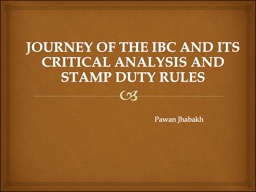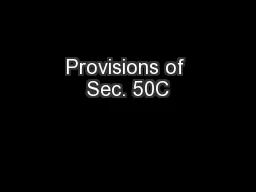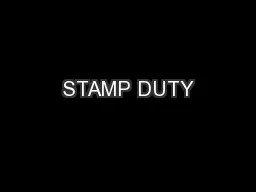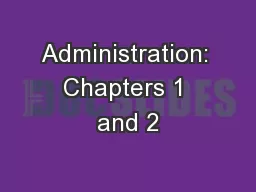PPT-JOURNEY OF THE IBC AND ITS CRITICAL ANALYSIS AND STAMP DUTY RULES
Author : dora | Published Date : 2023-11-05
Pawan Jhabakh INTRODUCTION Lord Mishcon who said that Insolvency is not a very thrilling or amusing subject However as Edward Jenks the noted English jurist
Presentation Embed Code
Download Presentation
Download Presentation The PPT/PDF document "JOURNEY OF THE IBC AND ITS CRITICAL ANAL..." is the property of its rightful owner. Permission is granted to download and print the materials on this website for personal, non-commercial use only, and to display it on your personal computer provided you do not modify the materials and that you retain all copyright notices contained in the materials. By downloading content from our website, you accept the terms of this agreement.
JOURNEY OF THE IBC AND ITS CRITICAL ANALYSIS AND STAMP DUTY RULES: Transcript
Download Rules Of Document
"JOURNEY OF THE IBC AND ITS CRITICAL ANALYSIS AND STAMP DUTY RULES"The content belongs to its owner. You may download and print it for personal use, without modification, and keep all copyright notices. By downloading, you agree to these terms.
Related Documents














